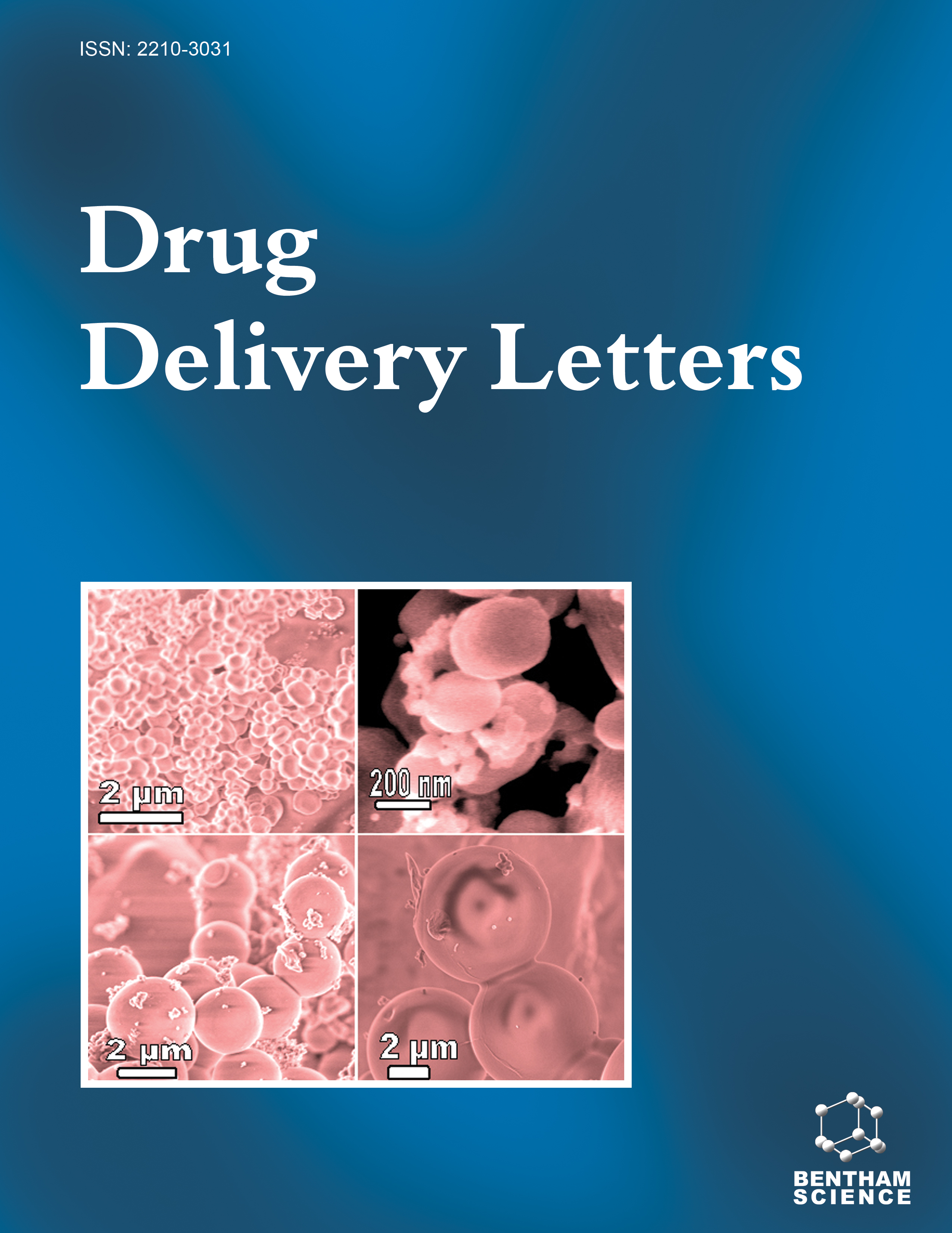- Home
- A-Z Publications
- Drug Delivery Letters
- Previous Issues
- Volume 5, Issue 2, 2015
Drug Delivery Letters - Volume 5, Issue 2, 2015
Volume 5, Issue 2, 2015
-
-
Quality by Design: Essential for Present Era of Pharmaceutical Manufacturing
More LessAuthors: Pravin Kumar, Ajay Kumar and Vinay PanditBackground: In the present competitive situation, pharmaceutical companies all over the world are mainly focusing on the quality of product for maximum consumer acceptance and market share. Regulatory authorities are also trying to develop the pharmaceutical manufacturing process and technology, which is more concerned about the quality. Methods: Various online data and industrial requirements were reviewed an Read More
-
-
-
Formulation Design, Optimization, Characterization and In Vivo Pharmacodynamic Study of Enteric coated Mucoadhesive Microcapsules of Esomeprazole Magnesium
More LessAuthors: Suryakanta Swain, Sruti Jammula, Chinam N. Patra, Sarwar Beg, Muddana E.B. Rao and Subas C. DindaBackground: The aim of the present study was to design and characterize the enteric coated mucoadhesive microcapsules of esomeprazole magnesium by solvent evaporation technique using drug, ethylcellulose and mucoadhesive polymer of 1:1:1 ratio for improving the mean gastric residence time and oral bioavailability of the drug. Methods: Characterization of the mucoadhesive microcapsules through FT-IR, and DS Read More
-
-
-
Investigation of in Vitro Release Dynamics of Cisplatin from Genipin Crosslinked Gelatin Nanocarriers
More LessAuthors: Huda Khan, R. N. Shukla and A. K. BajpaiBackground: Emergence of new synthetic methods has given great impetus and momentum to nanotechnology which has revolutionized almost all disciplines of science and technology including medicine and pharmacy. The most fascinating aspect of nanomaterials is their vital role in drug delivery technology that makes use of them as drug carrying vehicles and delivers the carried drug to the diseased site in pre-determine Read More
-
-
-
Enhancement of Skin Permeation of Glibenclamide from Ethyl Cellulose- Polyvinyl Pyrollidone based Transdermal Patches using Olive Oil and Mustard oil as Penetration Enhancer: In Vitro, Ex-Vivo and In Vivo Evaluation
More LessAuthors: Vaibhav Rastogi, Pragya, Arvind Kumar, Mayur Porwal, Arun K. Mishra, Navneet Verma and Anurag VermaGlibenclamide is a second generation hypoglycaemic agent used for the management of Diabetes Mellitus. In the present study, matrix type transdermal patches of Glibenclamide were prepared by solvent casting technique using various combinations of hydrophobic (ethyl cellulose) and hydrophilic (Polyvinyl pyrrolidone) polymer, named as batch A (without penetration enhancer) and batch B (with penetration enhancer). Read More
-
-
-
In Vitro Evaluation of Antimicrobial and Antiproliferative Activities for Compounds Isolated from the Ficus Bubu Warb. (Moraceae) Fruits: Chemotaxonomic Significance
More LessThis study investigated the in vitro antimicrobial and antiproliferative activities of the methanol extract and of purified compounds from fruits of Ficus bubu Warb. Extensive chromatographic isolations provided two stilbenes, that were identified by NMR and mass spectrometry as trans-resveratrol 4a and piceid 7a, in addition to several other chemical compounds. It was found that trans-resveratrol 4a exhibited the best Read More
-
-
-
Hyperthermia-Mediated Docetaxel Derivative Release from Temperature-Sensitive Nanomedicines
More LessBackground: Temperature-sensitive liposomes (TSLs) containing chemotherapeutic drugs offer the prospect of increased drug delivery and bioavailability at the diseased sites. This concept is applied to hydrophilic drugs, which can be encapsulated in the inner water-rich lumen of the liposomes. In order to extend the concept of TSL to a hydrophobic drug, such as docetaxel (DTX), this drug was modified at the hydroxyl Read More
-
-
-
Synthesis, Single Crystal Study, in silico Analysis, in vitro Antiinflammatory and Anticancer Activities of 7-hydroxy-14H-naphtho[2,3- a]phenothiazine-8,13-dione
More LessBackground: 7–hydroxy–14H–naphtho[2,3–a]phenothiazine–8,13–dione (AQATP) was synthesized by using iodobenzenediacetate as catalyst from 1,4–dihydroxyanthraquinone (1,4–AQ) which was isolated from Cassia tora seeds. Methods: They were then characterized by various spectral techniques. Single crystal X-ray diffraction studies revealed that AQATP crystallizes in orthorhombic space group. ADME Test was perfor Read More
-
Volumes & issues
Most Read This Month
Article
content/journals/ddl
Journal
10
5
false
en


